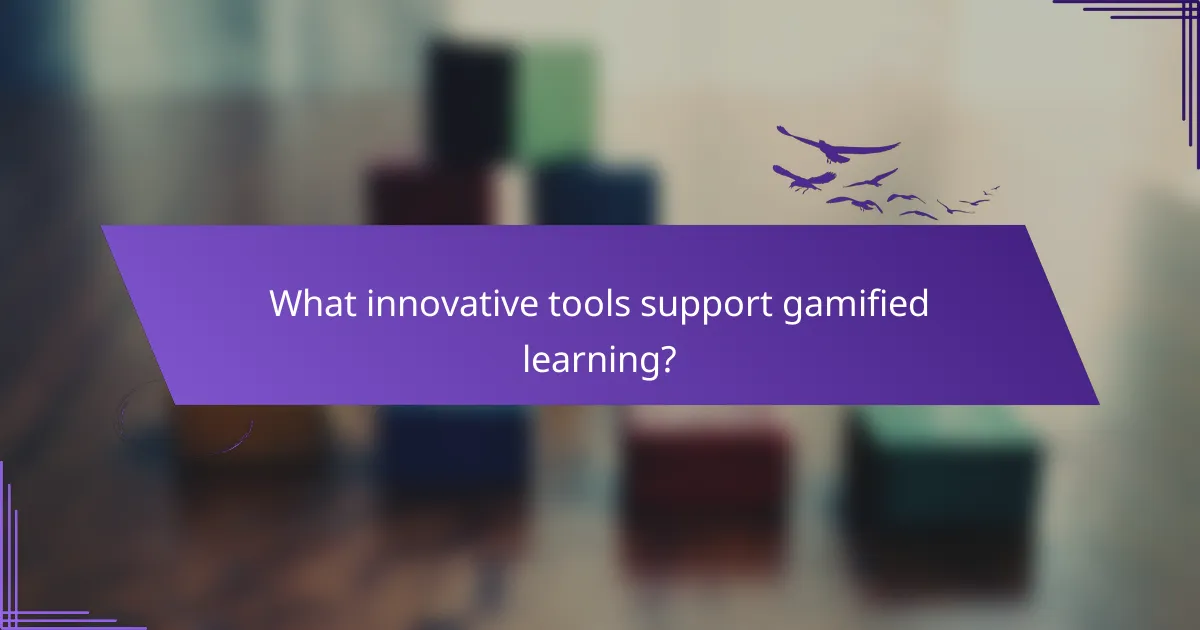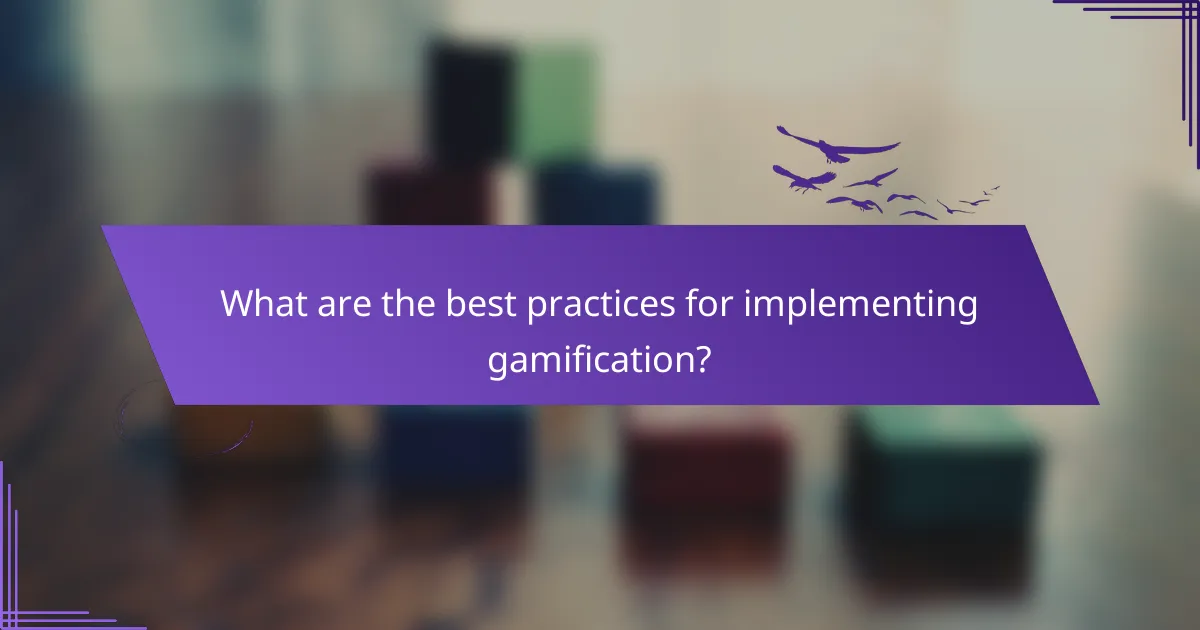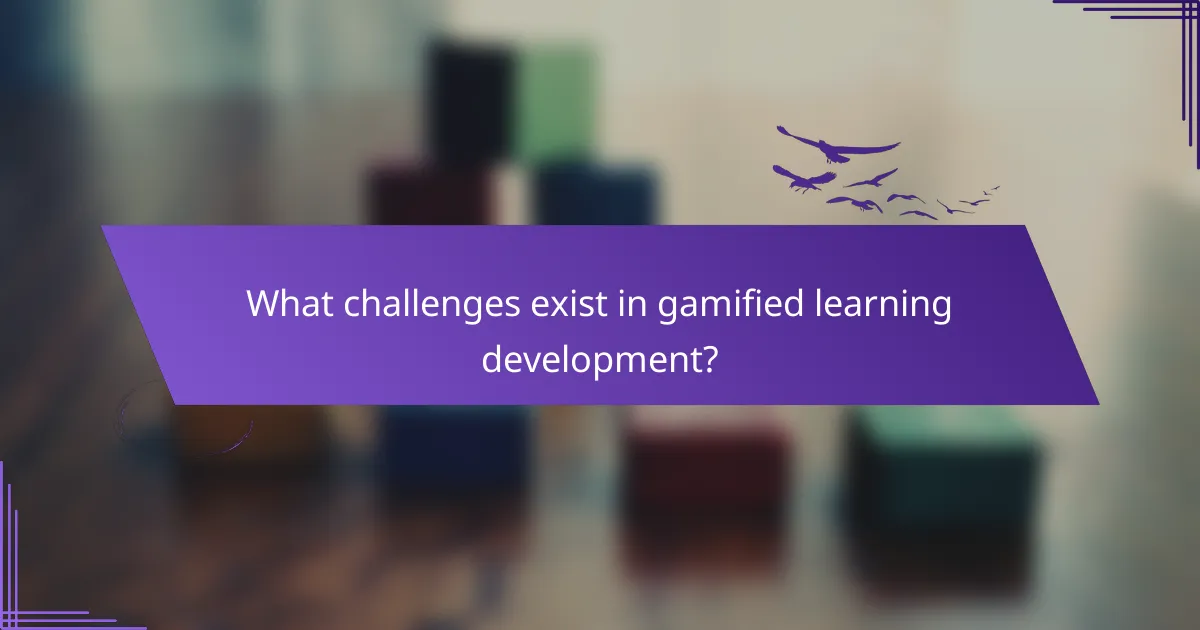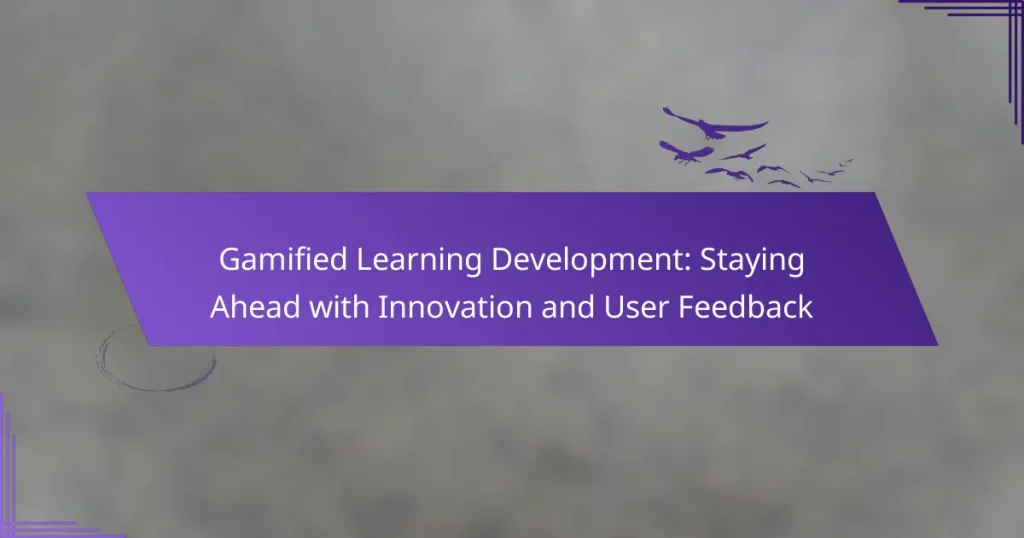Gamified learning development is revolutionizing education by integrating engaging game-like elements that enhance motivation and participation. By leveraging innovative tools and gathering user feedback, educators can create immersive experiences that not only captivate learners but also improve information retention and understanding.

How can gamified learning enhance online courses?
Gamified learning enhances online courses by integrating game-like elements to boost motivation and participation. This approach transforms traditional learning into an engaging experience, making it easier for learners to absorb and retain information.
Increased engagement through interactive elements
Interactive elements, such as quizzes, challenges, and leaderboards, significantly increase learner engagement. By incorporating these features, courses become more dynamic, encouraging students to actively participate rather than passively consume content.
For example, a course might include a point system where learners earn rewards for completing modules or participating in discussions. This not only motivates learners but also fosters a sense of community among participants.
Improved retention via game mechanics
Game mechanics, such as levels and achievements, enhance information retention by providing clear goals and milestones. When learners progress through levels, they are more likely to remember the material associated with each stage.
Incorporating elements like badges or certificates for completing sections can reinforce learning outcomes. Research indicates that gamified approaches can improve retention rates by a significant margin, often in the range of 20-30% compared to traditional methods.
Real-time feedback for learners
Real-time feedback is a crucial aspect of gamified learning, allowing learners to understand their progress instantly. Immediate responses to quizzes or challenges help identify areas needing improvement, facilitating a more personalized learning experience.
For instance, a platform might provide instant scores after a quiz, along with tips for areas where the learner struggled. This timely feedback loop encourages continuous improvement and keeps learners motivated to achieve their goals.

What innovative tools support gamified learning?
Innovative tools for gamified learning enhance engagement and retention by incorporating game-like elements into educational experiences. These tools leverage interactivity, collaboration, and role-playing to create immersive learning environments that motivate students and foster deeper understanding.
Kahoot! for interactive quizzes
Kahoot! is a popular platform that allows educators to create interactive quizzes that students can answer in real-time using their devices. This tool promotes friendly competition and instant feedback, making learning more dynamic and enjoyable.
To maximize its effectiveness, consider incorporating a mix of question types, such as multiple-choice and true/false, and keep quizzes short to maintain student interest. Aim for quizzes that last about 10-15 minutes, which is typically enough to cover key concepts without losing engagement.
Classcraft for role-playing experiences
Classcraft transforms the classroom into a role-playing game where students can create characters and earn rewards for positive behavior and academic achievements. This approach encourages collaboration and accountability among students, as they work together to complete quests and overcome challenges.
When implementing Classcraft, set clear expectations for behavior and participation. Consider using a points system that rewards both individual and group efforts, fostering a sense of community and shared goals. Regularly update quests to keep the content fresh and relevant.
Edmodo for collaborative learning
Edmodo serves as a social learning platform that facilitates collaboration among students and teachers. It allows users to share resources, participate in discussions, and submit assignments, creating a cohesive learning community that extends beyond the classroom.
To effectively use Edmodo, encourage students to engage in discussions and provide feedback on each other’s work. Establish guidelines for respectful communication and consider using polls to gauge student interests and preferences, which can help tailor the learning experience to their needs.

How to gather user feedback effectively?
Gathering user feedback effectively involves using a mix of methods to capture both quantitative and qualitative insights. This approach ensures a comprehensive understanding of user experiences and preferences, which can drive improvements in gamified learning development.
Surveys and polls for direct input
Surveys and polls are straightforward tools for collecting user feedback. They can be distributed via email, integrated into your platform, or shared on social media to reach a wider audience. Aim for concise questions that focus on specific aspects of the user experience.
Consider using a mix of multiple-choice questions and open-ended responses to gather both quantitative data and personal insights. Tools like Google Forms or SurveyMonkey can help streamline this process. Keep surveys short to encourage higher completion rates, ideally under 10 questions.
Analytics tools for behavioral insights
Analytics tools provide valuable behavioral insights by tracking user interactions within your gamified learning platform. Tools like Google Analytics or Mixpanel can help you understand how users engage with content, including time spent on tasks and completion rates.
Focus on key metrics such as user retention, engagement rates, and drop-off points. This data can highlight areas needing improvement and inform design decisions. Regularly review analytics to adapt your strategies based on user behavior trends.
Focus groups for qualitative feedback
Focus groups offer an opportunity to gather in-depth qualitative feedback from users. By bringing together a small group of participants, you can facilitate discussions that reveal deeper insights into their experiences and preferences.
When organizing focus groups, select diverse participants to represent different user segments. Prepare open-ended questions to guide the discussion, allowing participants to share their thoughts freely. Record sessions for later analysis, and be sure to create a comfortable environment to encourage honest feedback.

What are the best practices for implementing gamification?
Implementing gamification effectively requires a strategic approach that focuses on enhancing user engagement and learning outcomes. Best practices include defining clear objectives, incorporating rewards, and ensuring accessibility for all learners.
Define clear learning objectives
Establishing clear learning objectives is essential for successful gamification. These objectives guide the design of game elements and ensure that they align with educational goals. For example, if the goal is to improve vocabulary, the game should focus on word usage and retention.
When setting objectives, consider using the SMART criteria—Specific, Measurable, Achievable, Relevant, and Time-bound. This framework helps in creating focused and attainable goals, making it easier to assess progress and effectiveness.
Incorporate rewards and achievements
Rewards and achievements are crucial for motivating learners and enhancing engagement. These can include points, badges, or levels that learners earn as they progress. For instance, a language learning app might reward users with badges for completing a certain number of lessons or achieving a high score on quizzes.
It’s important to balance intrinsic and extrinsic rewards. While badges and points can motivate, fostering a sense of accomplishment and mastery through challenges is equally vital. Avoid overwhelming learners with too many rewards, as this can dilute their significance.
Ensure accessibility for all learners
Accessibility is a key consideration in gamified learning environments. Ensure that all learners, regardless of their abilities, can engage with the content. This may involve using screen readers, providing alternative text for images, and ensuring compatibility with various devices.
Consider the diverse needs of your audience. For example, using color-blind friendly palettes and providing captions for audio elements can enhance the experience for many learners. Regularly seek feedback from users to identify and address accessibility challenges effectively.

How does user feedback shape gamified learning?
User feedback is essential in shaping gamified learning by providing insights into learner preferences and experiences. This feedback allows developers to refine educational games, ensuring they are engaging and effective in meeting educational goals.
Iterative design based on learner input
Iterative design involves continuously improving gamified learning experiences based on direct feedback from users. By collecting input through surveys, interviews, or usability tests, developers can identify strengths and weaknesses in their games. This process often leads to multiple design cycles, where adjustments are made to enhance engagement and educational value.
For example, if learners find a particular game mechanic confusing, developers can modify or replace it in subsequent iterations. This responsiveness helps create a more intuitive and enjoyable learning environment.
Customization of content to meet needs
Customization allows gamified learning experiences to be tailored to the specific needs and preferences of learners. By analyzing feedback, developers can adjust content difficulty, themes, and learning objectives to better align with user interests and skill levels. This personalization can significantly boost motivation and retention.
For instance, if feedback indicates that learners prefer certain topics or formats, developers can prioritize these areas in future updates. Offering choices in avatars, challenges, or rewards can also enhance user satisfaction and engagement.
Enhancement of user experience through testing
User testing is a critical component in refining gamified learning experiences. By observing how learners interact with the game, developers can identify usability issues and areas for improvement. This hands-on approach often reveals insights that surveys alone may not capture.
Conducting A/B testing can be particularly effective, allowing developers to compare different versions of a game feature to see which performs better. Regular testing and updates based on user feedback ensure that the learning experience remains relevant and effective over time.

What challenges exist in gamified learning development?
Gamified learning development faces several challenges that can hinder its effectiveness, including the need to balance engagement with educational outcomes, technical constraints of platforms, and resistance from traditional educators. Addressing these challenges is crucial for creating impactful learning experiences.
Balancing fun with educational value
Finding the right mix of entertainment and educational content is essential in gamified learning. While engaging elements like rewards and competition can motivate learners, they must not overshadow the core educational objectives. Striking this balance often requires iterative testing and feedback from users to ensure that the gamified elements enhance rather than detract from learning.
For example, a game that rewards points for completing quizzes can be effective, but if the quizzes are too easy or irrelevant, learners may disengage. Developers should aim for a mix of challenging tasks and enjoyable gameplay to maintain interest while ensuring knowledge retention.
Technical limitations of platforms
Technical constraints can significantly impact the design and implementation of gamified learning experiences. Different platforms may have varying capabilities, affecting how interactive elements, graphics, and feedback mechanisms are integrated. Developers must be aware of these limitations and design accordingly to ensure a seamless user experience.
For instance, mobile platforms may have restrictions on graphics and processing power compared to desktop applications. Developers should prioritize essential features and optimize performance to accommodate a wide range of devices, ensuring accessibility for all learners.
Resistance from traditional educators
Many traditional educators may be skeptical of gamified learning approaches, viewing them as less serious or effective than conventional methods. This resistance can stem from a lack of understanding of how gamification can enhance learning outcomes or concerns about the potential for distraction. Engaging educators in the development process can help alleviate these concerns.
Providing evidence of successful case studies and demonstrating the educational benefits of gamified elements can help bridge the gap. Workshops and training sessions can also be effective in showcasing how gamification can complement existing curricula, making it easier for educators to embrace these innovative methods.


